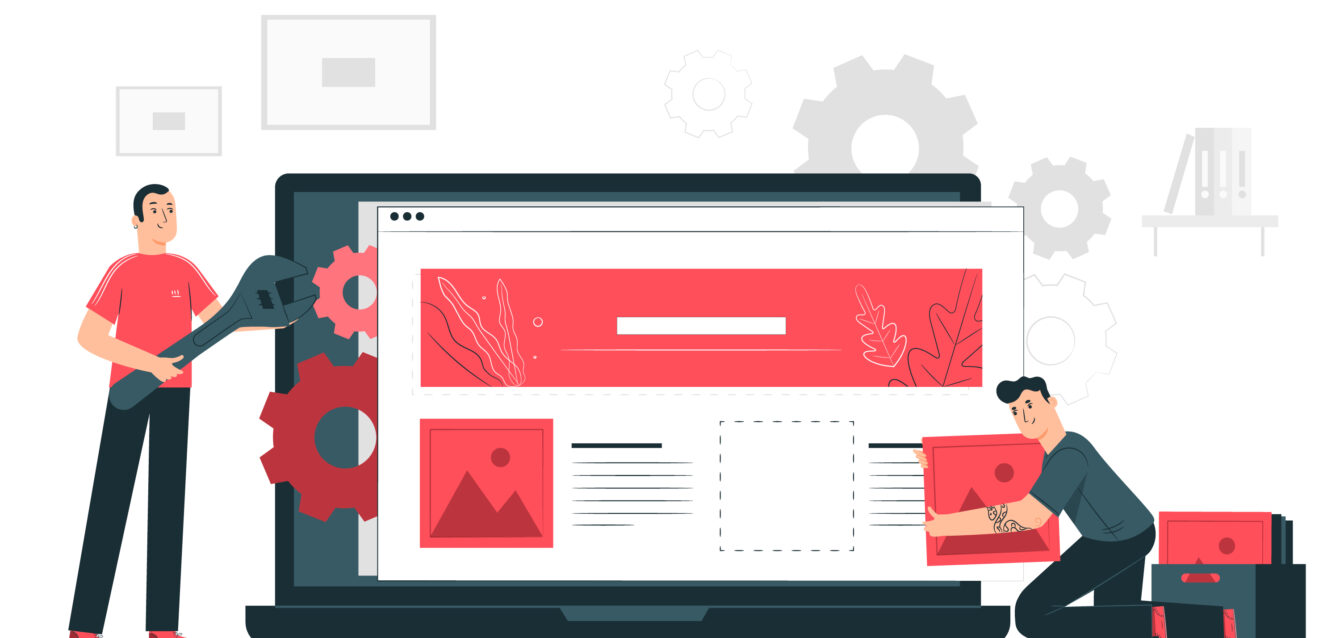Your website is a powerful marketing tool, but like any tool, it requires regular care and attention to function at its best. Website maintenance is a crucial part of managing your online presence. Regular updates, performance checks, and security patches ensure that your website continues to perform optimally, providing a great user experience and supporting your business goals.
What is Website Maintenance?
Website maintenance involves a set of tasks that help keep your website secure, functional, and up-to-date. It includes technical updates, content management, security checks, and performance optimization to ensure that your website continues to meet the needs of your audience and business.
Key Benefits of Regular Website Maintenance
- Improved Security
Regularly updating your website’s CMS, plugins, and themes is essential to prevent security breaches. Cybercriminals often exploit outdated software, so keeping your website up-to-date ensures that you have the latest security patches installed. - Better User Experience
Slow-loading pages, broken links, and outdated content can frustrate visitors and lead to high bounce rates. Regular maintenance ensures that everything works smoothly, improving user satisfaction and keeping visitors engaged. - Enhanced SEO Rankings
Search engines, like Google, reward websites that are well-maintained and updated with fresh content. Regular updates to content and metadata, fixing broken links, and optimizing images will help improve your SEO rankings, making your site more discoverable. - Prevention of Technical Issues
Websites can encounter technical problems, such as broken links, outdated code, or software glitches. Regular checks help identify and fix these issues before they affect the user experience or cause more significant problems. - Reduced Downtime
A poorly maintained website may experience more downtime, which can hurt your business. Regular maintenance minimizes the risk of unexpected downtime and ensures that your website is always accessible to users.
Essential Maintenance Tasks to Perform
- Update Content Regularly
Fresh and relevant content is essential for engaging visitors and improving SEO. Regularly update blog posts, product descriptions, images, and other content to keep your site current and informative. - Check for Broken Links
Broken links create a frustrating user experience and can negatively affect your SEO rankings. Use tools like Google Search Console to check for broken links and fix them regularly. - Backup Your Website
Regular backups ensure that you can recover your site if anything goes wrong, whether it’s a technical issue, cyberattack, or accidental deletion. Backups should be performed frequently to ensure that the latest version of your website is always safe. - Optimize Website Speed
Website performance is crucial for user experience and SEO. Slow-loading websites tend to drive visitors away. Use tools like Google PageSpeed Insights to identify performance issues and optimize your site’s load time. - Check Mobile Responsiveness
More and more people access websites through mobile devices, so it’s essential that your website looks and functions well on smartphones and tablets. Test your website’s mobile responsiveness regularly to ensure a smooth user experience across devices. - Install Software Updates
Outdated software can leave your site vulnerable to cyberattacks and performance issues. Always install updates for your CMS, plugins, and themes to ensure they are secure and compatible with other website components. - Perform Security Scans
Regular security scans help identify and fix potential vulnerabilities in your website. Use tools like Sucuri or Wordfence to scan your website for malware, hackers, and other security threats. - Conduct SEO Audits
Regular SEO audits help you maintain your website’s search engine ranking. Review keyword usage, page load times, metadata, backlinks, and content to ensure your site remains optimized for search engines.
How Often Should You Perform Website Maintenance?
- Monthly Maintenance
- Check for broken links and fix any errors.
- Backup your website data.
- Update plugins, themes, and software.
- Test website speed and performance.
- Quarterly Maintenance
- Perform SEO audits and make content adjustments.
- Review website design and make minor updates.
- Conduct security scans and address any vulnerabilities.
- Annual Maintenance
- Perform a complete website redesign if necessary.
- Review overall website functionality and make improvements.
- Review hosting options to ensure optimal performance and security.
Best Practices for Website Maintenance
- Keep a Maintenance Schedule
Having a routine maintenance schedule ensures that tasks are not overlooked. Set aside time each month or quarter to perform checks and updates. - Monitor Analytics
Website analytics can help you understand user behavior and identify areas for improvement. Regularly check metrics like bounce rate, time on site, and page load speed to guide your maintenance efforts. - Test New Features
If you plan to introduce new features or design changes, always test them in a staging environment before going live. This minimizes the risk of errors affecting the live site. - Consider Professional Maintenance Services
If website maintenance seems like too much work, you can hire professional services that will take care of all aspects of your website, from content updates to security monitoring.
Risks of Not Maintaining Your Website
- Increased Vulnerability to Cyber Attacks
Without regular updates and security checks, your website becomes an easy target for hackers, potentially leading to data breaches or loss of user trust. - Loss of Search Engine Rankings
Websites that are not maintained tend to drop in search engine rankings due to outdated content, broken links, and poor performance. - Negative Impact on User Experience
Slow load times, broken links, and outdated content can frustrate users, leading to a high bounce rate and a damaged reputation for your brand. - Decreased Conversions
A website that doesn’t function properly or is filled with outdated content will likely lead to fewer conversions, whether it’s product sales, contact form submissions, or newsletter sign-ups.
Conclusion
Website maintenance is not just a task but an ongoing investment in the health and success of your online presence. Regular updates, security checks, and performance optimizations ensure that your website remains secure, functional, and effective in reaching your business goals. By staying on top of website maintenance, you’re not only preventing potential problems but also ensuring a positive and engaging experience for your users.
Ready to keep your website in top shape?
Let’s discuss how we can help with ongoing maintenance and updates!







